Today we go to a future where all pop stars use avatars, clones, robots or cartoons instead of their real bodies and faces. What does that do to music? Can everybody pull off an avatar? And why would any pop star even want that?
We start with a conspiracy theory. Jaya Saxena tells us about the theory that Beyonce is a clone. And one of the reasons Jaya thinks that people might think Beyonce is using a clone is because she’s so private, and hates doing press stuff. Which of course is not the case, Beyonce may seem perfect but she is in fact a single human woman.
But the idea that a pop star might want to use a clone or avatar to do some of the more boring and annoying tasks required of pop stars: red carpets, meet and greets, constant interviews, is believable. Kelsey McKinney, a culture writer at Fusion, says that most of the pop stars she’s interviewed would absolutely take an out if they were given one. She tells us about what the grind of pop-stardom is really like, and why so many stars eventually do break down.
Now, there are some pop stars who use fronts or avatars. The Gorillaz performed as a cartoon troupe. Daft Punk wears those helmetty things. Sia wears a big wig. Deadmaus often performs wearing a giant mouse head. There’s this rock band called The Residents that has a small but very intense cult following. MF Doom performed in this gladiator mask. There are lots of examples of this. But Kelsey points out that none of them have reached the level of fame that say Beyonce or Taylor Swift has.
The one possible place we can find a true pop star that is represented by an avatar is Hatsune Miku. Now, if you’re not familiar with Hatsune Miku, she’s a 16 year old Japanese popstar. She’s 5 feet 2 inches tall, and she weighs 93 pounds and she’s got this really striking blue hair that is usually in these super long pigtails. And she is not real, she’s a cartoon or hologram. Hatsune Miku is a particularly interesting case to me because unlike The Gorillaz or Daft Punk or Sia, Hatsune Miku isn’t a front for a person. There is no artist laboring behind the scenes, who then goes out and uses the Hatsune Miku cartoon character to perform. She’s entirely a fabrication of a company, and I swear to you that I am not making this up, the company’s name is Crypton Future Media. And Crypton Future Media makes these singing synthesizer programs. And that’s where Hatsune Miku’s voice comes from, it’s totally created by a computer.
And last week when I was doing some research for this episode I realized that Hatsune Miku was actually playing at Hammerstein Ballroom in New York City where I live, in just a couple days. So, obviously I bought tickets and this past weekend I dragged my very patient boyfriend to her show. You can hear how that went in the episode.
But of course I can’t interview Hatsune Miku, since she’s not real. So instead I called my favorite anonymous musician: the man behind Hussalonia. You can read about the back story to Hussalonia on their site, but here’s the gist: Hussalonia is a pop music cult, which was purchased by an evil soap company called Nefarico, which demanded that Jesse no longer use his name or face in the songs, and also required him to put out two albums of soap jingles. And the man behind Hussalonia, Jesse Mank, tells us about why he came up with this story, and why he didn’t even do interviews until recently.
Finally, we all discuss what kinds of avatars people would choose, whether certain types of music are better suited to avatars, and what kind of fan art might spring up from these avatars.
Flash Forward is produced by me, Rose Eveleth, and is part of the Boing Boing podcast family. The intro music is by Asura and the outtro music is by Broke for Free. Special thanks to the Hussalonia founder for letting us use his music in the episode, you can check out all of Jesse’s albums at Hussalonia.com. The voices for the intro were provided by Deb Chacra, Jade Davis, Wendy Hari, Brent Rose and Jess Zimmerman. The episode art is by Matt Lubchansky.
If you want to suggest a future we should take on, send us a note on Twitter, Facebook or by email at info@flashforwardpod.com. We love hearing your ideas! And if you think you’ve spotted one of the little references I’ve hidden in the episode, email us there too. If you’re right, I’ll send you something cool.
And if you want to support the show, there are a few ways you can do that too! I actually just set up two new ways to support the show, so go to flashforwardpod.com/support to learn more. You can now donate a one time amount instead of monthly, you can become an Acast+ member, sign up for Patreon, buy some merch, all kinds of things. And if you can’t support the show financially that’s totally fine, you can still help! Head to iTunes and leave us a nice review or just tell your friends about us. I swear those things really do help.
That’s all for this future, come back next time and we’ll travel to a new one.
▹▹▹▹▹▹▹▹▹▹▹▹▹▹▹▹▹▹▹▹▹▹▹▹▹▹▹▹▹▹▹▹▹▹▹▹▹▹▹▹▹▹▹▹▹▹▹▹▹▹▹▹▹▹▹▹▹▹▹▹▹▹▹▹▹▹
TRANSCRIPT
Hello and welcome to Flash Forward! I’m Rose and I’m your host. Flash Forward is a podcast about the future! Every episode we start with a little trip to the future, and then we come back to now to really overthink how that future might go down.
So one quick thing before we jump into this week’s future. I’m putting it up here because I know that SOME of you skip the endings of the podcast. It’s okay! I do it to to other shows. But I wanted to tell you that I’m doing a secret Flash Forward project. I can’t tell you much, because it’s a secret, but it will involve adventure and puzzles and mystery and a bunch of really cool stuff. I’m currently trying to raise a tiny bit of money to make it work. If you’re interested in learning more, go to flashforwardpod.com and you’ll see a link on the home page to a secret project. Check it out, and if you’ve got a couple bucks to spare, help me make it happen.
Okay! Let’s go to the future. This week we’re starting in 2085.
[[Music]]
Quinn: Hello and welcome to Pop Music Happy Hour! Our roundtable podcast about all things pop and culture. I’m Quinn Yamaguchi-Pahlavi, and I’m joined this week by Keisha Pierce-Totenberg and Nasira Kozlowski-Bianculli. Keisha, Nasira, thanks so much for joining me.
This week we’ve got two big pop avatar discussions. First we’re going to talk about the band Gargantua’s controversial decision to switch their avatars, and what fans think about that decision. Then we’re going to talk about the current spat between Saki and Fujita over the similarities between their avatars. Saki is claiming that Fujita recently changed her avatar to copy her, and their fans are really going at it online.
So, Nasira, let’s start with Gargantua. Now, for those who don’t know, Gargatua is a popmetaltechno band, and from the very beginning they had always used the same personas, this set of extremely large babies. And last week, with the launch of their latest album Pantagruel, they announced that they would be changing their avatars. The unveiled the new personas to fans first, at the end of the album the new band popped up, and they’re now performing as a set of what look like medieval knights I guess? They all have full armor on. So Nasira, how have fans reacted and why?
Nasira: Yeah, so Gargatua’s fans are, for the most part, unhappy about this change I’d say. The band amassed a pretty loyal indie following before they were bought up by their current label DigiBoard and the fans really see the gigantic babies as a core part of the band. I mean, the knights they have now aren’t even that big!
[[Meeting]]
Agent: Okay, so we’ve got the contract all set with Billboard, we’re ready to sign, they’re ready to sign, they just want us to send mockups of the avatar before they give the final okay. So let’s go through them all now, and make sure we’re 100% on these.
[[clicking]]
Agent: Last time we met we narrowed it down to two options, there’s this one. The sexy kitten thing. And there’s this one, the punky rebel otter. So, we’ve got cute and kind of edgy. What do you think?
PopStar: Yeah I just, I don’t know. I kind of hate both of these?
Agent: What?
PopStar: I hate these.
Agent: We’ve spend six months on this. We don’t have time to start over.
PopStar: I know, I know, but like, I just… do I want to be a sexy kitten? Really? Or an otter? What is that otter even wearing? Are those plastic bracelets? I don’t think otters wear shoes.
Agent: Billboard wants our answer today you have got to be kidding me.
PopStar: I knowwww I’ve just been thinking about this a lot.
Agent: At some point you have to stop changing your mind.
PopStar: Look, this is going to be my public face for everything, all my concerts, meet and greets, music videos. This thing is ME. I want to like it. I just don’t feel like a sexy kitten or a punky otter.
Agent: Well you’re going to have to learn to feel like one, because we are not starting over.
PopStar: Can I be a sexy otter? Can you just like, swap the personalities?
Agent: Let me make some calls.
News announcer: Fans of the singer Crysta are reeling this afternoon after her avatar was hacked mid-concert. Concert goers report that in the middle of her set, the normally small, blonde avatar used by Crysta morphed into a gigantic lizard with red eyes. Systems administrators for Crysta say that the hackers also attempted to replace the sound with their own message, but were thwarted. The result, a very large lizard dancing to Crysta brand of upbeat pop, was both entertaining and confusing. Some concert goers say they weren’t sure if the giant lizard was part of the show or not.
Rose: So this week’s episode is about a future where pop stars are all anonymous. They perform and appear via avatars or robots or holograms or cartoons or, whatever form they choose! Just, not humans. Or at least not, their real human selves.
And I want to start this episode out, with a conspiracy theory. People who know me in real life know that I am really, really into conspiracy theories. Not in the like, I believe conspiracy theories way, but in the I just love reading about them way. I love learning about all the incredible theories and backstories and subplots that people come up with. I really think it’s an underappreciated art form.
Anyway so I want to tell you all about a conspiracy theory that I recently heard about. I promise that this is relevant to today’s episode. And to tell us about this conspiracy theory, I called up friend and journalist Jaya Saxena. Jaya recently covered this particular conspiracy theory for the Daily Dot.
Rose: Okay let’s start, can you just tell me what this conspiracy theory is, what is the scam here with Beyonce?
Jaya: Right so there are actually a couple of different theories, as to Beyonce being a clone
Rose: Yes, you heard that right. A clone. There are people on the internet who think that Beyonce either is a clone or has a clone, or has multiple clones like a clone army. I’ll let Jaya explain.
Jaya: The first one that’s been around for a couple of years is that the real Beyonce was killed in the year 2000, and was cloned, and that’s sort of either done by the government, or the record labels in that they wanted to have full control over her so they killed her and created a new one. And so, I think stemming from that versions of this conspiracy have sort of popped up, whether you know, there is a currently living quote unquote real beyonce and then a clone beyonce that can do other things, multiple clones et cetera. Basically just as an excuse for why she seems to be able to accomplish so much in so little time is that there are many of her.
Rose: Just so you don’t think that we are totally making this up to fool you. Which would be a pretty good prank. I’m going to play a clip from a YouTube video for you. The title of this video is, and it’s in all caps, BEYONCE EXPOSED AS A CLONE ROBOTIOD MANICAN.
Clip: Beyonce, clone, is getting pimped out by the Illuminati, off the brand and the name. Beyonce was closed a long time ago, you can see that long giraffe neck, lighter skin color, was replaced a long time ago. You see the mannequin skin? Clone lips.
Rose: So if you were actually watching this video right now you’d see like, hand held camera footage of a screen, and one by one the person pulling up of photos of Beyonce. Some of them are from like 2003, 2004 and some of them are more recent. And this person is showing us these photos to prove that Beyonce is actually now a robotoid mannequin.
Clip: You see the eyes? The skin texture? Look at the eyes! Yup, it’s a mannequin. Wax, shiny skin. It’s a clone.
Jaya: The main evidence that people seem to point to is that she just looks different than she did five or ten years ago which I find really interesting, because, of course she does. She’s 35, 36 now? She’s going to look different than she did when she was 25 or 19 or whenever Destiny’s Child first started, she aged like a human woman. But people post these photos and saying that oh you know her nose is shaped differently, and she’s got these wrinkles or these thinner cheeks, so clearly it’s a different person. And, you know, most likely it’s not. Most likely she just got older, because even though she’s Beyonce she’s still subject to human aging
Rose: You hold your tongue.
Jaya: I know, I know, not to speak ill of Beyonce but she is human.
Rose: Not if you ask this guy.
Clip: I’m telling you, B, is a clone.
Rose: Okay so this video goes on for a long time. It’s like nine minutes long and it’s just like this the entire thing. And this person is totally not alone, there is a group of people on the internet who truly believe that Beyonce is a clone. And in fact people have had clone theories like this about other pop stars too. Now we’ve heard the evidence on one side, but Jaya has some thoughts about why people might want to believe, or really believe, that Beyonce is a clone.
Jaya: If you look at Beyonce’s career, at at this point she’s had a very long career, and there really don’t seem to be any missteps, there’s no breakdown, besides the elevator incident with Solange and Jay Z, she hasn’t been involved in much drama, and I think that might strike people as strange. You expect people who started their career as a teenager and then goes on to continue this career, you expect them to have some moment of weakness, some moment where they flip out, they’re caught with drugs, and Beyonce has not largely. So I think there just then keeps being this ramped up idea of what is she hiding and how is she hiding it? And clones, clones is how she’s hiding it.
Rose: But another reason that Jaya thinks that this Beyonce clone army theory has taken hold is that Beyonce is really private. She doesn’t do interviews, she doesn’t really do a ton of publicity stuff, she just pops up out of nowhere and releases these epic hour long films and albums. While other stars like Taylor Swift or Justin Beiber are doing constant interviews and photoshoots and press tours and meet and greets, Beyonce is not. So maybe she took it a step further. Maybe she hired a clone, or got a clone, or had a clone made? To go out and do these press things.
Okay, so, no, I’m going to go ahead and say here, on the record that Beyonce is not a clone, nor is she an army of clones. But the idea that a pop star might want to use some kind of avatar, or body double, that’s honestly believable to me.
Kelsey McKenney: So obviously I am not a popstar so I cannot speak with complete authority on this because I have not experienced this. But from my, from the popstars I have talked to and this shows I have seen and the behavior that I consistently see exhibited I think every single pop star would take it out if they were given one.
That’s Kelsey McKenney, she’s a culture writer for Fusion and she covers pop culture, pop music and pop stars.
Kelsey: So I have seen probably stadium tours in the last six months
And she says that even popstars who aren’t, say, Beyonce have to endure this incredibly rigorous schedule and work life that is just … exhausting.
Kelsey: I think most of them like to perform on some level, most of them do not like the grind of tour where you’re being shipped to different cities every night, you’re sleeping in different beds, you’re having to do all this insane prep work to keep your body up to par. But I really think what really grates on pop stars more is kind of this like constant performance that we’re talking about where you have to be on all the time so and that that I think the big killer for a lot of these stars is are they meet and greets which is if you go to a major props show and you pay like a certain amount of money you can go backstage and like meet these pop stars and they always give you a little spiel they’re like “oh so and so it’s like actually very shy. So like don’t be nervous or they’ll be nervous.” But really like the reason that these managers are telling you that is like think about how exhausting it is to try and comfort 3000 people who are all just coming to meet and take a selfie with you. It’s a totally emotional drain for someone who’s doing this every single day for six months.
Rose: If you pay any attention to celebrity news, which, I don’t, but apparently you would know that Justin Bieber recently had a sort of weird mini breakdown.
Kelsey: Like Justin Bieber for example recently at his absolute most authentic is him in his Instagram post last week looking absolutely miserable in a park in Boston when he was walking around barefoot looking very very sad. He’s posting things on his Instagram that are like i’m cancelling like he just canceled all of his VIP meet and greets for his tour because he basically was like I am exhausted and I cannot do this.
Rose: For me, when I think of a pop star just totally going off the rails, I think of Britney Spears. In 2007, Britney Spears kind of lost it. You might remember this. And a lot of that stuff was driven by our insatiable desire for access and information about pop stars.
Kelsey: There was so much demand for news for about Britney Spears from like 2000 or 2005 like every single day. If you look at like old gossip blogs every single day there’s something new about her constant conspiracy theories, constant questions about like who she was. Concert questions about her relationship with Justin Timberlake just on and on and on and on and on.
Rose: And eventually Britney just kind of broke down. If she could have sent a clone or a hologram in her place, would we remember Britney as the woman who shaved her head and attacked a car with an umbrella? Or would she have been able to deal with all the stress and attention better? I don’t know, but I think that for many stars, if you offered them a clone, they’d probably take it.
Kelsey: If you told Beyonce like would you like to clone yourself so that you can just hang out at home with like Solange in your child and like write a breakup album about Jay-Z. I mean she would be like absolutely yes I have six clones they’ll all do all of this bullshit that I don’t want to do and I’ll just stay home and do the things that I’m actually passionate about.
Rose: Now, there are some pop stars who use fronts or avatars. The Gorillaz performed as a cartoon troupe. Daft Punk wears those helmetty things. Sia wears a big wig. Deadmaus often performs wearing a giant mouse head. There’s this rock band called The Residents that has a small but very intense cult following. MF Doom performed in this gladiator mask. There are lots of examples of this. But Kelsey points out that none of them have reached the level of fame that say Beyonce or Taylor Swift has.
Kelsey: I don’t know that you could build a career as an avatar.
Rose: Because, being a mega pop star, isn’t really about your music. It’s about you.
Kelsey: The difference in being a B-list pop star in a lot of ways is not the quality of your song or the quality of your performance or the quality of the machine behind you it’s how well you can convince people to care about you.
And it’s hard to get people to care, really really care, the way people really really care about Taylor or Beyonce, when you’re not… a real person.
But there is one possible counterexample to this. And that’s Hatsune Miku. Now, if you’re not familiar with Hatsune Miku, she’s a 16 year old Japanese popstar. She’s 5 feet 2 inches tall, and she weighs 93 pounds and she’s got this really striking blue hair that is usually in these super long pigtails. And she is not real, she’s a cartoon or hologram. Hatsune Miku is a particularly interesting case to me because unlike The Gorillaz or Daft Punk or Sia, Hatsune Miku isn’t a front for a person. There is no artist laboring behind the scenes, who then goes out and uses the Hatsune Miku cartoon character to perform. She’s entirely a fabrication of a company, and I swear to you that I am not making this up, the company’s name is Crypton Future Media. And Crypton Future Media makes these singing synthesizer programs. And that’s where Hatsune Miku’s voice comes from, it’s totally created by a computer.
So she is just entirely a fabrication. And yet, people love her. All the songs that she performs are all written by fans. And so far, fans have written over 100,000 songs for Hatsune Miku who is, once again, a cartoon character with a synthesizer voice.
Now it’s hard to quantify how many fans a pop star actually has, but Hatsune Miku has gone on tour in Asia and the United States and her shows often sell out. And if you look online at reddit or Tumblr or Twitter for Hatsune Miku stuff you will find A LOT of it. Because she’s really a fan generated thing so there is a TON of fan art about Hatsune Miku. And also a ton of porn, SO MUCH porn. So she’s definitely not a star at the level of Beyonce but she’s really popular.
So last week when I was doing some research for this episode I realized that Hatsune Miku was actually playing at Hammerstein Ballroom in New York City where I live, in just a couple days. So, obviously I bought tickets and this past weekend I dragged my very patient boyfriend to her show. And when we come back, you’re going hear about how that went. But first! A quick break.
[[AD]]
[[AD]] If you like Flash Forward, which I assume you do? Since you’re listening to this right now? I want to tell you about another show that you will probably like, it’s one of my favorite podcasts. It’s called Gastropod, and in fact if you’re all caught up with this season of Flash Forward you’ve heard the hosts already! Cynthia Graber and Nicola Twilly joined us to talk about calories on our episode about quantified self. And their show, Gastropod, is awesome. If you like food, science and history, Gastropod is the perfect show for you. They dive deep into everything from citrus to mezcal to caffeine to kelp. You can find Gastropod on any podcast listening app, including the one you’re probably using right this second to listen to Flash Forward! They have an episode out TODAY about beer, and I can’t wait to finish this episode of Flash Forward so I can go listen to it. Okay, back to the future!
Song → Song of Interactive Voice Response Answering Service, Hussalonia (https://archive.org/details/The_Somewhat_Surprising_Return_of_the_Hussalonia_Robot_Singers)
Rose: Oh no I forgot to start recording! Okay so we are getting ready for this Hatsune Miku concert, and I’m going to ask Robert what he thinks is about to happen.
Robert: Well I know what the show is going to be about, so I suspect that we’re going to a pop concert of some kind where the presentation of the artist is not necessarily the artist, whether that’s something as simple as like a Deadmau5 mask, or a Tupac hologram or something even different I’m excited to find out.
Rose: So you’ve never heard of Hatsune Miku
Robert: No.
Rose: Good, I’m excited.
Rose: So this week we’re talking about a future in which all pop stars perform and move through the world using avatars. And when we left off I was about to drag my very patient boyfriend, to a concert for a cartoon character.
Now I wasn’t allowed to record while I was in the concert, but you just have to believe me that it was, fascinating. So Hammerstein Ballroom fits 2,200 people, and the show wasn’t sold out but I would guess there were probably around 2,000 people there. And they were SO into this. Every time Hatsune Miku would appear on the screen, fans would scream and jump up and down get extremely excited.
And, as I was looking around watching these fans, I noticed someone standing next to us who I basically watched for the rest of the show. She was about my height and she had curly brown hair, and she was wearing a Hatune Miku t-shirt, and she seemed to be there alone, and she knew ALL the words to the songs, which by the way are in Japanese, not English so I had no idea what she was saying. And towards the end of the concert, during I guess one of the big final numbers, I looked over and she was crying. Which reminded me of something Kelsey told me.
Kelsey: So I have seen probably six stadium tours in the last six months at every show I have watched someone cry. Like. Every single show.
Rose: And when she said that I thought, okay I can kind of see crying at a Beyonce concert, I guess? But I did NOT expect to see someone crying at a Hatsune Miku concert. But there she was, standing right next to us, crying. Like really really crying.
Kelsey: These managers are creating a narrative in this show that allows space for people to have an emotional reaction much like someone directing a mega-church service might do. But it’s also just that like people really feel like they know pop stars even though like you and I can sit here and say like academically or thoughtfully or whatever that oh you don’t know these pop stars, you know a version of them that they’re projecting out into the world. We can say that but we are not the 14 year old girl who really truly thinks that she’s in love with Justin Bieber or the 30 year old woman who bawls her eyes out at the Beyonce show like these people still do have an incredible personal connection and powerful like persona.
Rose: And I don’t mean any of this to make fun of Hatsune Miku fans. I had a great time, I have weird fandoms as well, it really was a fun concert, but I also kept just thinking like, this is not a real person, all these people are here, they paid like $75, and losing their MINDS over a cartoon character who was created by a software company to sell a product. So, if you can get all these people THIS excited for Hatsune Miku, then why not for any other avatar?
Even my dude thought it was pretty cool.
Rose: I just want to ask you some questions. Okay so we just left the Hatsune Miku concert and I just wanted to ask you what you thought, was is your feeling about this how did it go?
Robert: It was … really weird but like, in a cool way. It was very interesting to see how into it people were, people were very invested, when the character woudl come out and they clearly knew all the songs.
Rose: Would you go again
Robert: I haven’t decided yet, I’m definitely going to tell a lot of people about it, and recommend that they go when she’s in their city, but I don’t think I need to go again.
Rose: You feel like you got it.
Robert: I feel like I got what I’m going to get, at least until I become a big fan and learn all the songs and become invested in the songs.
Rose: You can find most them on YouTube.
Robert: Oh that’s good to know.
Rose: You’ve got Monday off you could watch them all.
Robert: Oh yeah, Memorial Day weekend Hatsune Miku concert, that’s a good way to celebrate our lost in battle.
Rose: Yes, exactly, okay, thank you.
Robert: That’s all you need?
[[fade out]]
Rose: Okay, so at this point I’m convinced that avatar pop stars could totally happen. And will totally happen. But since I can’t interview Hatsuen Miku, because she is not real, I wanted to talk to a musician who has an avatar, someone who puts out music under a pseudonym or a character.
And I pretty quickly knew exactly who I wanted to talk to. There’s this, band? I guess or, it’s not really a band, but there’s this musical entity called Hussalonia. Now I can’t remember how I came across Hussalonia, or even really when, but Hussalonia has a bunch of albums out there and they are delightful. There’s this one track called Dear Hussalonia, Letters from Animals, Mostly Ducks. And I want to play for you a track off my favorite album, which is this album called The Somewhat Surprising Return of the Hussalonia Robot Singers. And the whole album is sung by robots, or at least that’s the premise. And I’ll just play a clip of a song for you.
Song → Hussalonia: RURR
So, I sent an email to The Hussalonia Founder, and I basically didn’t expect to hear back. I mean, whoever this is puts out all this music under this fake name with this whole backstory, which I’ll explain in a second, and doing an interview about it might kind of ruin that.
Jesse Mank: So if you know a few years ago I would have said no. Definitely. I think I’ve had people tell me and I just said yeah no.
So obviously he actually responded! And his name is Jesse Mank, and he told me all about Hussalonia.
Rose: So can you tell me the story of Hussalonia?
Jesse: There’s no definitive story. And are you. Are you asking for the fictionalized story or the truth?
Rose: Let’s start with the story.
Jesse: Well the fictionalized stories. There was a man named Jesse Mank in. He wrote and recorded songs and in 2011 released them as Hussalonia which he called a pop music cult because he didn’t want to be a band he realized he wasn’t a band and he did realize that he would want to be a singer songwriter either and so he just decided that it is a matter of semantics what’s the difference between a band and a cult, both have leaders and so under this belief system that pop does not mean popular because there are so many pop acts that never ever become popular. I mean pop is short for popular. He decides to you know just start this pop music cult. And in 2011 there’s a corporate buyout in this soap factory the soap company Nefarico buys out Hussalonia and essentially. Decides that Jesse Mank can no longer use his name or face in association with Hussalonia. And you know there are a series of lawsuits and no new contracts that were very stern and resulted in all sorts of unreasonable obligations. Hence the ferric Jingles album and the somewhat surprising return of the fair go jingles. And so now Nefarico will allow the hustle he’s just called hustling a founder now. And if Nefarico will allow the hustle and founder to use his face but still not his real name that’s essentially the story. You know if you read some of the hustle on your albums on bandcamp the liner notes some of them have more detailed stories.
Rose: So, to recap, Hussalonia is a pop music cult, which was purchased by an evil soap company called Nefarico, which demanded that Jesse no longer use his name or face in the songs, and also required him to put out two albums of soap jingles.
Jesse: I recognize it’s funny too in Don’t get me wrong. It’s it’s it’s an art project and it’s entertaining and it’s done with humor you know. You know I don’t pretend to take myself too seriously.
Rose: So I wanted to talk to Jesse about why? Why create a front for your music?
Jesse: Well now you’re asking for the truth. Well I guess the truth is that I just don’t I’m just not comfortable with attention. You know that’s that’s the short answer.
Rose: So, Jesse had been making music for years, since 1997, and he started to put that music online under his own name and it just, weirded him out.
Jesse: If it you know the Internet’s a weird place because you know you publish stuff and it becomes like a mirror and you get to see your reflection in ways that you can’t normally do. You can’t normally experience in real life. And it really weirded me out seeing my name on the Internet. You know this is the name that I used to like right. I like you know 2nd grade math paper. And it’s the name that appears like. Income tax return. And then there it is on the Internet. It really weirded me out and I just didn’t want to be there.
Rose: On top of that, he switched jobs, and, had a kid.
Jesse: I think I was really nervous I was really afraid that my students would Google me and find out about this. And then I had kids and then it was like you know then I’m a father too. And the whole thing just maybe was a identity crisis and I decided that I just had to take Jesse Menke us quit. And I felt so much more comfortable and liberated by by not having my name or face associated with it.
Rose: So he created Hussalonia. At one point when we were talking Jesse said that in some ways the front, Hussalonia, the music cult, the evil soap company, felt more genuine to him than putting music out as Jesse Mank.
Jesse: So I honestly I really don’t know who. I really don’t know who I am. When I think about like if I had to be out there if I had to get on a stage in you know charm an audience I don’t I don’t even know how I would do it you know. So you know to to create this fake oppression seems more closer to the truth. You know I’m not actually oppressed by a soap company but I’m oppressed by all sorts of things internally. You know my my sort of internal struggle. You know I battle depression. You know I have a hard time you know feeling confident sometimes in so it just makes sense to blame, to create some force to blame it all on. And in that in that sense Nefarico feels real to me you know. You know Nefarico is is is all these all these things that oppress me in my real life. It’s a way to to create this fictional force that. You know very neatly symbolizes the things that keep me down
Rose: And he says that a lot of musicians have their own demons, and becoming popular and doing all the performative stuff is really tough for them.
Jesse: if you’re really good at your art as a musician you have to have spent along a lot of time alone. And so how does one acquire those skills to cope with fame and being in front of people so avatars might be good for a certain kind of artist that you know has a hard time dealing with people and interacting with people and you know accepting attention in that very sort of extroverted way and it might even be good for music because right now pop music is I should say popular pop music like top 40 music. It’s determined by people who have a lot of charisma and showmanship.
Rose: So Jesse thinks that having avatars to use, instead of having to go out there yourself all the time, might actually be good for music.
Jesse: You know and the Avatar business would be great. It would be great for introverts. And I suspect that many artists are in fact introverts and in fact probably many great potentially great artists never make it because you know they’re just they they don’t translate well to the stage. And then you know people who aren’t you know attractive by society’s standards you know are sort of kept at bay. And you know an avatar would certainly benefit them. So you know I think it be good for you know a lot of different types of artists who are excluded from mainstream music.
Rose; So let’s say we all live in a world full of pop avatars. What is that world like? First, let’s talk about what kinds of avatars we’d actually see.
Jesse: Because I think OK well what if what if I could have an avatar in what would it be. I would have a hard time choosing a human face or body type or even a personality. I don’t I don’t know what I would want to represent my music and you know then maybe I’d logically move to animals and you know maybe it’s a band of rabbits or what have you and that would be funny and be entertaining. But then you know who would really want to go out to a club and see a band of rabbits you know play sing. ** I say that I think everybody. Everybody everybody would want to go to a club and see their rabbits cats squirrels lemurs. Oh man lemurs. A band of lemurs.
Rose: I would absolutely go see a band of lemurs play music, just saying. But of course many of these replacement bodies will be human, and will look like humans. And that will come with a whole lot of baggage.
Jesse: You know the other great thing is that it would it would definitely lend itself well to seeming immortality of pop stars because you know they wouldn’t have to age visually.
Kelsey:: But you know like when it’s wired with Yeah I don’t know I mean I think the I kind of like I would be interested to watch the kind of avatar system play out mostly because I wonder what it would do in terms of the constructions of beauty.
RoseL That’s Kelsey McKinney again, the music writer for Fusion.
Kelsey: Right so like if every pop star picked an avatar right does your avatar look exactly like you or are you like my avatar is slightly skinnier and slightly taller and slightly more ripped right or whatever you’re like ideals of beauty are if you’re Meghan Trainor are you saying like my avatar is like a little curvy or that I am in order to like portray this message I don’t know. It would be kind of fascinating to watch them have to pick. The and watch the think pieces pour out like Beyonce’s new avatars like hip bones or whatever you know be kind of a mess.
Rose: And if everybody had these digital or even physical stand ins, there would be a lot more weird fan art going on. What if you could recreate the avatar of Beyonce and put on bootleg shows with it in your basement?
Kelsey: It would be like fanfiction! Like fanfiction concerts. Like how much would you pay to watch a like, Jay-Z Beyonce hologram show of Lemonade. Right like, so much money, like take it take my card and leg swipe it for whatever this is going to cost me. You know there’s definitely some markets of that. And I wonder if this technology becomes more accessible and users who use I feel like it could very quickly become like fan based art then becomes like weird basement shows that go viral on the Internet.
Rose: And if you’re a clone or hologram, you can live on in those performances forever. Or have multiple shows on the same night in many cities. Because you don’t have to actually be there.
Now, Jesse doesn’t think that every popular musician could do this. Some genres, he says, don’t really work when you hide behind an animatronic lemur, or whatever it is.
Jesse: I don’t I don’t see an avatar a successful singer songwriter avatar you know, future you know let’s say like along the lines of Elliott Smith you know a sort of confessional singer songwriter. You want to human being behind that music. You want to see a human face and you want you want you know you’ll love it with his or her imperfections you know so to make it you know slick does seems counter intuitive.
Rose: But for mega-pop stars, people whose songs are written by hit makers and who aren’t confessing their deepest feelings on stage, a clone or cartoon could totally do the job. Of course, like all trends, the avatar phase of pop would probably fade eventually.
Kelsey: Let’s say every pop star was like we’re opting out we’re not doing this anymore, we’re going to become these like normal humans and then we’re going to project ourselves into the world of pop. I think what would happen immediately is I think someone would come out as like a true person and that person would sell a million and a million albums. I think that’s kind of the problem with creating that kind of vacuum is that I don’t think it would last. I don’t think I don’t think you could get everyone to agree to it. But also I think even if you did get someone to to agree to it all that would happen is some 16 year old YouTube popper would become the new pop star because that room to be like she is a real person.
Rose: And, maybe not that much would be different than it is today. Because, in a lot of ways, pop stars today, they kind of *are* avatars. What we see of Taylor Swift or Beyonce or Justin Bieber, that’s not really them. It’s this constructed idea of them. It’s almost like a clone.
Jesse: Yeah I mean Lady Gaga is an avatar. You know we all understand that she doesn’t dress that way when she’s going grocery shopping or you know hanging out with her parents.
Kelsey: : One of the most amazing thing about watching pop stars live is how sweatless they look. So like you can watch Beyonce perform in 80 degree outdoor stadium. She is undergoing like what is a workout that would probably kill me. And she looks like, she, she doesn’t even look real. She never breaks a sweat. Her hair is never out of place. Like it is incredible and it’s completely constructed right. No one is actually sweatless. It’s a series of mirrors and panels in which she can go behind the scenes and someone can mop her brow and she can return on stage with dry hair. But it looks for all intensive purposes for the audience like she is perfect like she would never sweat in front of you and that’s kind of it. That’s kind of the insanity of this like construction of identity for pop stars is that it’s it’s this perfection that’s completely unattainable but while you watch it completely believable, where you say like of course Beyonce doesn’t sweat she’s perfect.
Rose: If I were a pop star, which, thank god I am not, I would totally opt for a clone. What about you? Do you think Beyonce is a clone? Would you listen to a pop star that was a cartoon or animatronic lizard? What would your pop avatar be?! Tell me! Call and leave a voicemail at (347) 927-1425 or send a voice memo from your phone to info@flashforwardpod.com. I think my pop avatar would be a snail.
Okay! That’s all for this episode. Flash Forward is produced by me, Rose Eveleth, and is part of the Boing Boing podcast family. The intro music is by Asura and the outtro music is by Broke for Free. Special thanks to the Hussalonia founder for letting us use his music in the episode, you can check out all of Jesse’s albums at Hussalonia.com. The voices for the intro were provided by Deb Chacra, Jade Davis, Wendy Hari, Brent Rose and Jess Zimmerman. The episode art is by Matt Lubchansky.
If you want to suggest a future we should take on, send us a note on Twitter, Facebook or by email at info@flashforwardpod.com. We love hearing your ideas! And if you think you’ve spotted one of the little references I’ve hidden in the episode, email us there too. If you’re right, I’ll send you something cool.
And if you want to support the show, there are a few ways you can do that too! I actually just set up two new ways to support the show, so go to flashforwardpod.com/support to learn more. You can now donate a one time amount instead of monthly, you can become an Acast+ member, sign up for Patreon, buy some merch, all kinds of things. And if you can’t support the show financially that’s totally fine, you can still help! Head to iTunes and leave us a nice review or just tell your friends about us. I swear those things really do help.
That’s all for this future, come back next time and we’ll travel to a new one.
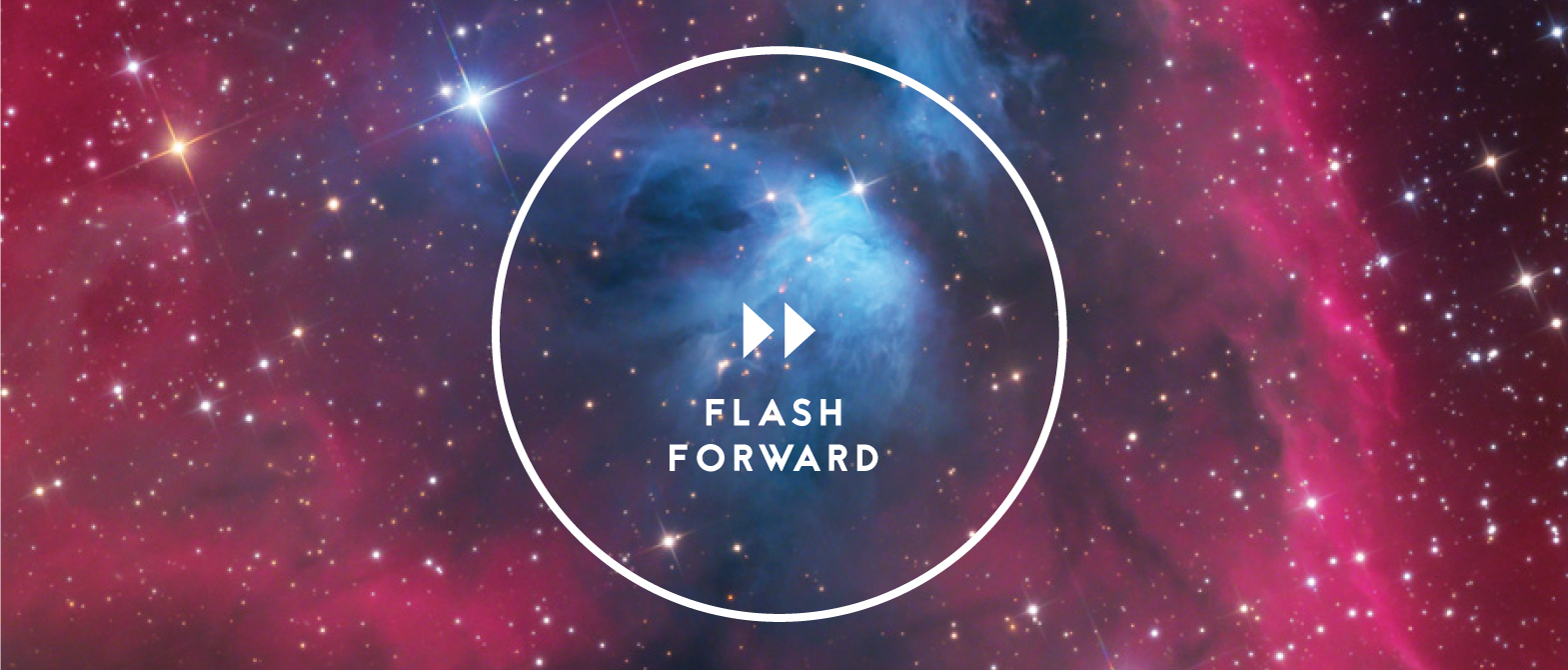
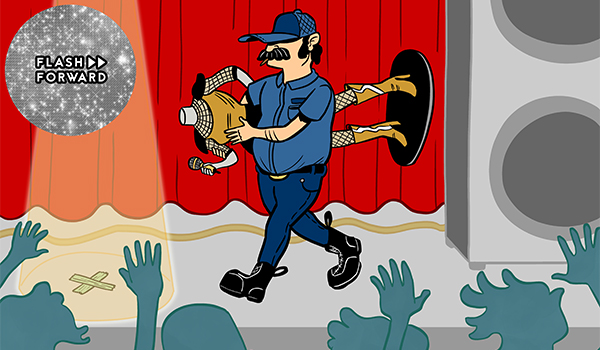
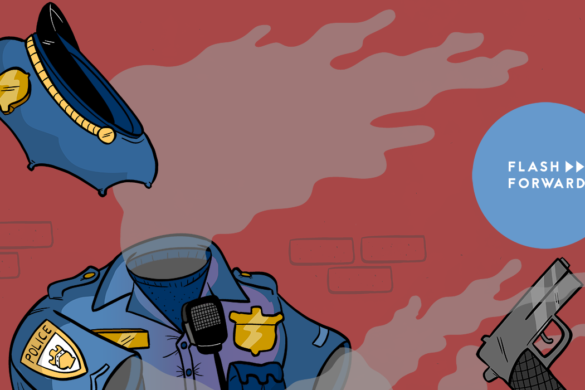
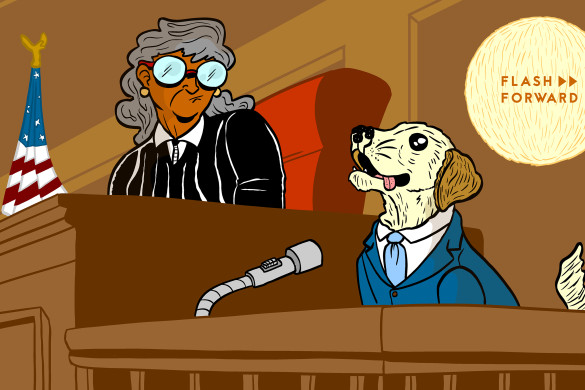
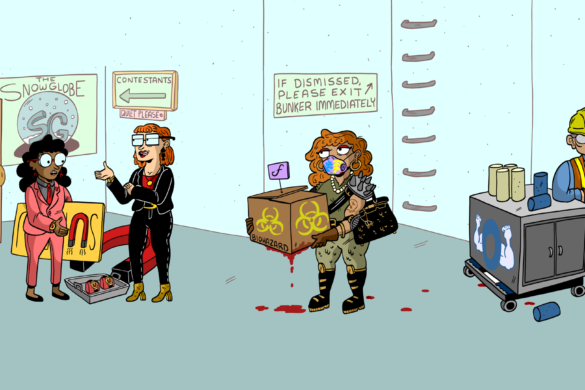
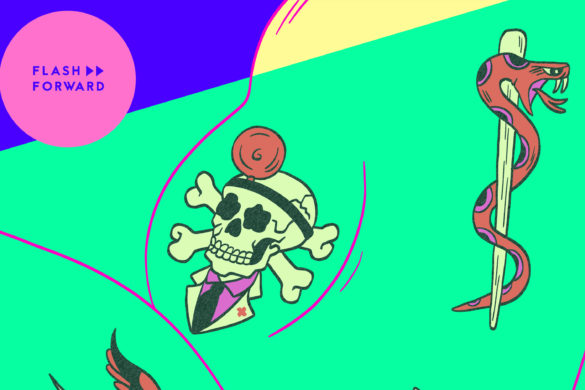
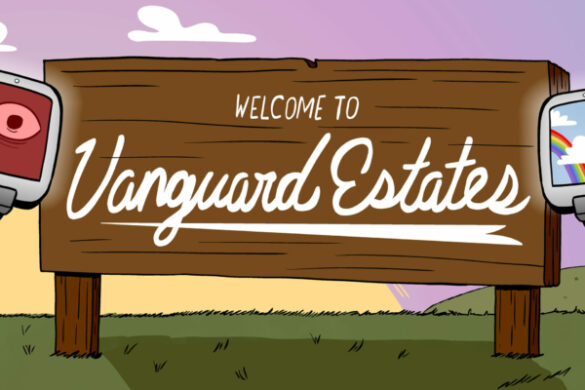
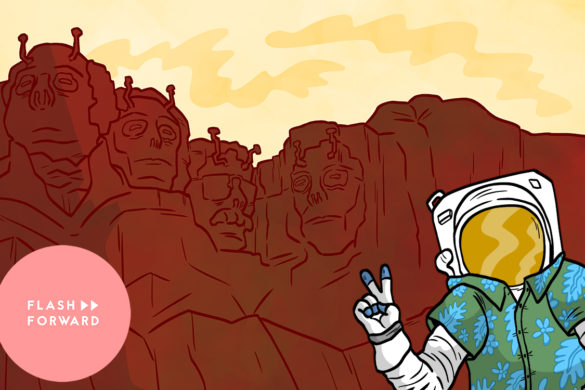
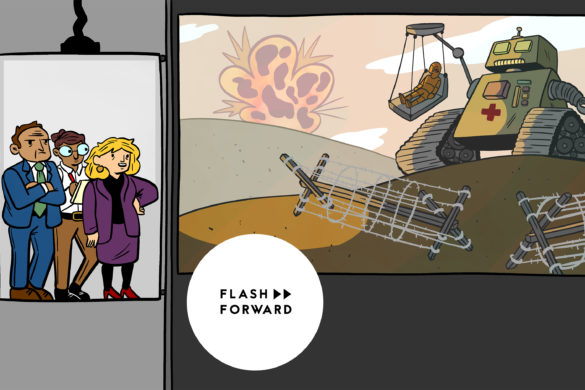
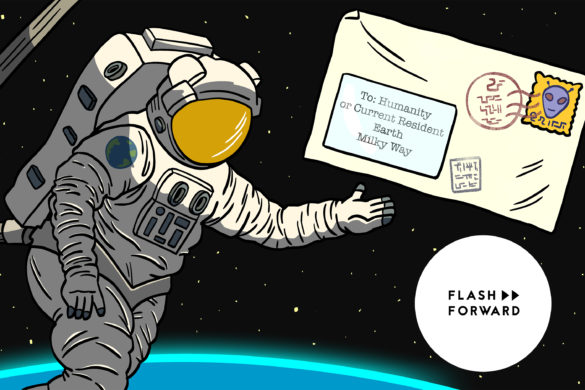
18 comments
[…] ▹▹ Full show notes […]
I’ve been a Miku fan since 2008. One that’s really unique about Miku (and Vocaloids) in general is that anyone can produce a song for her using the software. Even if the pop stars use avatars like in this future scenario, it’ll still be only one (or a few) writers and producers making songs for him/her. It won’t have the massive diversity of Miku songs.
Yes! I should have mentioned that in the episode. I would love to hear more about your Miku fandom! How did you discover her? What about her is appealing to you? (I don’t mean that to sound like she’s not appealing, I’m just really interested in her fans.) If you’re game to record a little voice memo about why you like her I’d love to play it on the show! Instructions here: https://www.flashforwardpod.com/2016/02/24/how-to-send-us-a-voice-memo/
Thanks! ▹▹ Rose
I think it’s funny that anyone would dismiss the possibility of avatar pop stardom for two reasons:
1) Look at J-pop/K-pop. Japan has taken the Disney-manufactured pop band to an exponential level. They assemble pretty faces, market them like they do their cartoon/merchandise properties, keep them more or less in a box when they’re not being used, manufacture their lives and fully Truman Show them… I mean, they’re already pretty much living avatars. They probably would animate them, except merchandising a slave requires a lot less overhead than an animation. There’s no team of animators and programmers. You can stage a “life-event” in a public place, with a mobile phone camera & YouTube on a whim without weeks of animation and preparation. And there’s the inevitable drama and starfall that those kinds of fans live for. And in this case, the fans know it’s all manufactured and still pour billions of dollars into it. When the overhead on animation comes closer to the slave-labor level, the corporate overlords probably will make the switch, and nobody will probably notice.
2) What’s the difference between an arena show and an avatar performance? You’re so far away from the action that you would actually see it infinitely better on TV. Go more than 20 rows out, and who can really tell the difference between a live show and a show in a movie theater anyway?
Not only is is a matter of time before avatar shows are commonplace, 8 years ago or so we interviewed an artist for our podcast that mostly performed in SecondLife, Suzen Juel (www.suzenjuel.com). She was an avatar performing in front of avatars. Let that one marinate… And I watch my friend Nicki’s (https://www.facebook.com/nickisbaffonimusic/) shows via Periscope and other online streaming services all the time. With all the motion in VR tech in recent years, I fully expect every show bigger than a bar to include a walled off area front and center for the 360 video camera. You’ll be able to jack in with your ‘trodes (can I get a not for a “Strange Days” reference?) and get a better show than anybody that saw it live.
[…] In another, artifical wombs are the norm. In yet another, space pirates take over the Moon. In this week’s, we look at a future where pop stars and other public figures move through the world, appear in […]
[…] In another, artifical wombs are the norm. In yet another, space pirates take over the Moon. In this week’s, we look at a future where pop stars and other public figures move through the world, appear in […]
[…] In another, artifical wombs are the norm. In yet another, space pirates take over the Moon. In this week’s, we look at a future where pop stars and other public figures move through the world, appear in […]
[…] In another, artifical wombs are the norm. In yet another, space pirates take over the Moon. In this week’s, we look at a future where pop stars and other public figures move through the world, appear in […]
[…] In another, artifical wombs are the norm. In yet another, space pirates take over the Moon. In this week’s, we look at a future where pop stars and other public figures move through the world, appear in […]
[…] In another, artifical wombs are the norm. In yet another, space pirates take over the Moon. In this week’s, we look at a future where pop stars and other public figures move through the world, appear in […]
[…] In another, artifical wombs are the norm. In yet another, space pirates take over the Moon. In this week’s, we look at a future where pop stars and other public figures move through the world, appear in […]
[…] In another, artifical wombs are the norm. In yet another, space pirates take over the Moon. In this week’s, we look at a future where pop stars and other public figures move through the world, appear in […]
[…] In another, artifical wombs are the norm. In yet another, space pirates take over the Moon. In this week’s, we look at a future where pop stars and other public figures move through the world, appear in […]
[…] In another, artificial wombs are the norm. In yet another, space pirates take over the Moon. In this week’s, we look at a future where pop stars and other public figures move through the world, appear in […]
I’m surprised you managed to make it through the whole episode without bringing up the quintessential example — David Bowie. He created multiple avatars — Ziggy Stardust, the Thin White Duke, Nathan Adler, and so many more — and so maintained a separation between his own self and his performance. The Hussalonia interview even reminded me of interviews I’d heard with Bowie, where he brought up some of the same reasons for wanting to create a public face distinct from his own self. He never went the Sexy Cartoon Otter route, of course, but if he’d had the technology available I could easily imagine him trying on a hologrammatic or robot persona, at least for an album or two.
There are so many great examples! KISS, Bowie, Prince, GWAR (a ton of metal bands in general), the list goes on!
I am behind in listening, so just heard this episode today on the subway home….and subsequently just spent the past hour watching “Live” Hatsune Miko concert videos on YouTube. I am completely perplexed……and now feel very old, and don’t understand “kids these days” and wish they would just get off my lawn! (But I live in Brooklyn, so don’t have a lawn).
[…] recommend you start with) include Unpawful (about a future where keeping pets has become illegal), Popnonymous (popstars no longer perform in person, but through avatars), Love at First Bot (sex bots), and Face […]